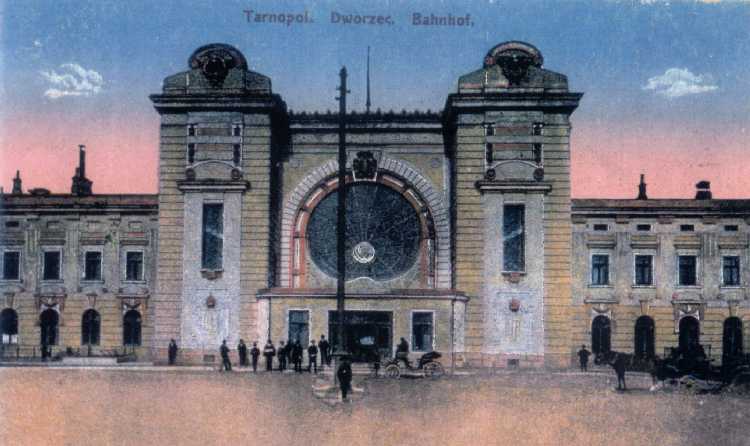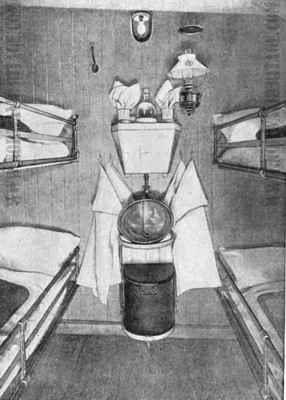 |
| The Train Station in Ternopil', the beginning of my Grandmother's journey to the United States. |
Tomorrow, the 4th of July, 2014 is the 100th
anniversary of my grandmother, Pauline Rychly Koshuba Haykak’s arrival in
Minneapolis, Minnesota. She left
her home in the village of Bila, just outside of the city of Ternopil’ (aka
Tarnopol), in June 1914. I am not
sure of the exact date, but I do know that she left on the ship, The Kronprinz
Wilhem, from Bremen Germany, on June 23, 1914, bound for New York City.
 |
| The Kronprinz Wilhem, built in 1901, shortly after my Grandmother arrived in the US in 1914 it became a German warship. |
According to the ship’s manifest, she
was 14 years old. She traveled
with her Uncle and Aunt, Constantine and Maria Bilan Rychly and their young
daughter, Anna. All of her
belongings were in a trunk, which for some reason, she kept for her entire
life. One of her grandsons has the
trunk now.
The voyage was difficult for Pauline, since she was seasick
for most of the time. She was
traveling on 3rd class tickets, commonly known as steerage, and was
processed at Castle Garden, the old immigrant processing center, reopened because
Ellis Island could not handle of the large number of ships arriving in New
York. Castle Garden is located
near Battery Park and the terminal for the Staten Island Ferry in lower
Manhattan.
 |
| Photo by Alfred Stieglitz, Steerage class on a ship bound for Bremen, Germany is 1907 |
 |
| Castle Garden, where my Grandmother first stepped on American soil. |
Passengers who had first or second class tickets were
processed on board, and left from a dock near where the Verrazano Narrows
Bridge is today. Third class
passengers were taken by ferry to Ellis Island, or Castle Garden for
immigration processing. If there
were no problems, the immigrants took another ferry to the railroad station in
New Jersey, where they continued the journey to their final destination. Third class tickets for the trip from
Europe to the United States big money makers for the shipping lines and railroads,
and were often offered as package deals, costing about $25. I have to mention that although the
price of a trans-Atlantic ticket appears to be low, it took an average
immigrant working in the United States at that time, about a year to save the
money to buy a ticket for a relative in Europe. The shipping lines made no
money on first or second class tickets, the profit was made on the third class
tickets.
 |
| Four bunks in a steerage class cabin. |
 |
| Third Class Dining Room on a Trans-Atlantic passenger ship |
Accommodations on the voyage in third class were Spartan. The steerage section was in the front of the ship, which felt all the pitching and rolling. Meals were included in the fare, but
the food served was unfamiliar to many of the immigrants, so they didn’t eat
it. My great-aunt, Katherine
remembers that she was served liverwurst sandwiches and ripe bananas, which she
had never seen before. The
accommodations were basic, on the lower decks, travelers slept in bunk beds,
which were sometimes in large rooms, sometimes in cabins. There were portholes
in some of the cabins, but they didn’t open. Passengers spent the day walking on the
deck. There were no lounges
or entertainment offered to immigrants.
 |
| Ellis Island Train Station--after being processed, many immigrants boarded a train here for the trip to the West. |
 |
| Inside a car on an immigrant train |
Pauline’s sea voyage from Germany to New York took about nine
days. My grandmother must have been on a slow train, because it took four days
to go from New Jersey to Minneapolis. Often all the passengers on a train were
immigrants, so the facilities on the trains were meager, especially if the
train and ship were a package deal.
 |
| Milwaukee Station, Minneapolis MN. |
On July 4th, Pauline, Constantine, Maria and Anna
arrived in Minneapolis, and were met their family members. Pauline’s father, Sylvester had been in
the United States since 1908, and her sister Anna, since 1913. Fourth of July fireworks made a big
impression on Pauline, since she had never seen such a display. Within a few days, she was working in
the laundry at the Nicollet Hotel in downtown Minneapolis.
 |
| Gateway Park and the Nicollet Hotel where my Grandmother worked when she first came to Minneapolis |
 |
| Pauline and Anna Rychly in 1915. This is the oldest picture I have of my Grandmother. |













